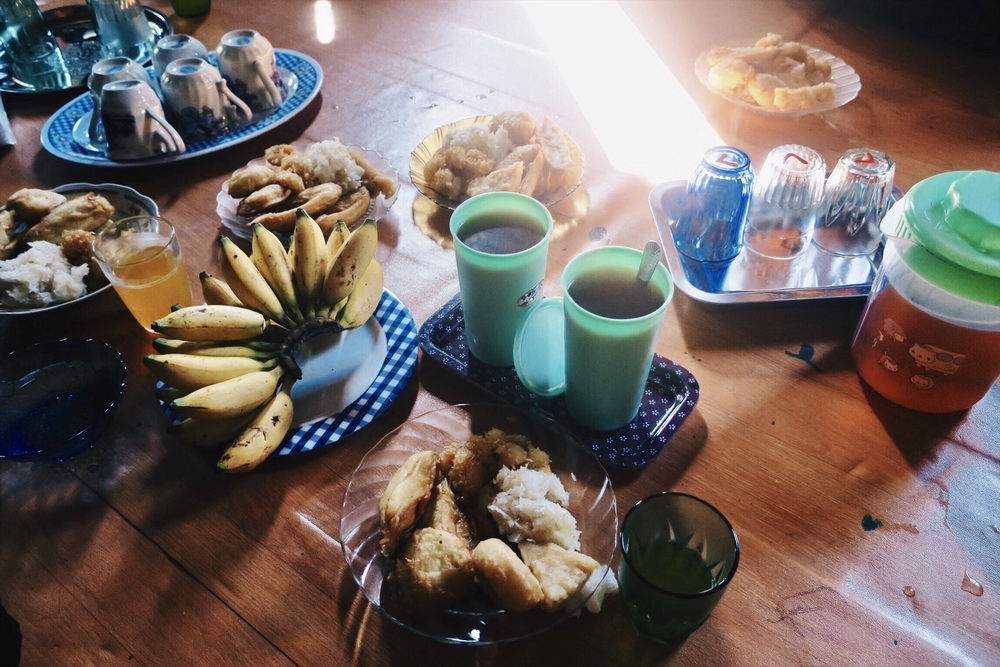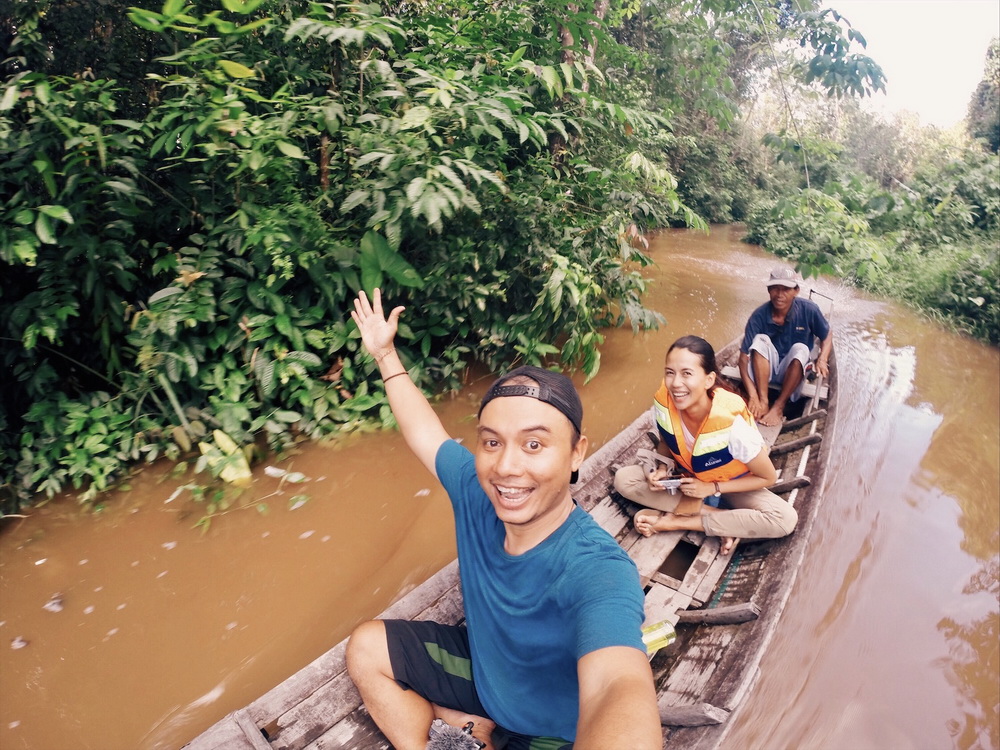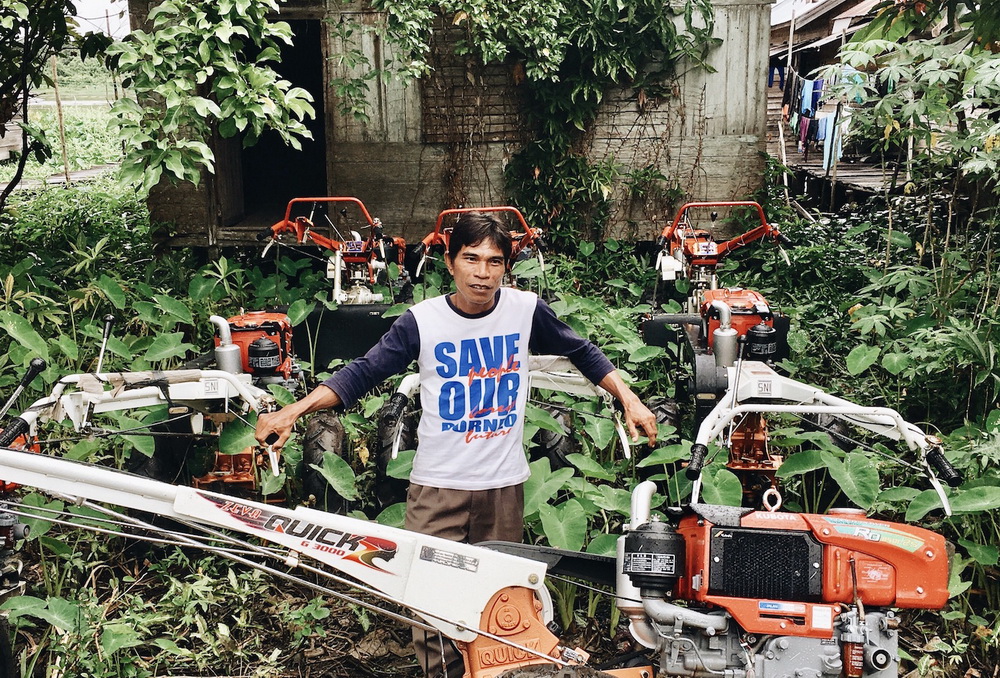Digital Creative Campaign Training for Pantau Gambut Network
By AdminLooking at Peatlands through a Different Lens

Since the ban on peatland burning for cultivation, some peat communities have struggled to manage their land. A trip to Mangatai Hulu shows the effort communities make to continue cultivating peatlands without burning them. This narrative shows clearly how important it is for the government to consult local communities on peat-related policies.
About the author: Nadine Zamira Sjarief is an Indonesian public figure and environmental entrepreneur and activist. She was Miss Earth Indonesia, representing Indonesia at Miss Earth 2009.
"How much longer?" I asked.
"It's close, about 20 minutes," our driver replied.
An hour later, we were still on our way. The streets were bumpy as we traveled over hollow peatland. “Perhaps the perception of space and time is different here,” I thought to myself, as a city kid used to being surrounded by skyscrapers. No wonder that thought came to me; all I could see was endless open space stretching toward the horizon. I set up the zoom lens on my camera to capture the wide landscapes.
This time I was headed to Mantangai Hulu, a village on the riverbanks of the Kapuas in Central Kalimantan, where there was a group of progressive farmers we wished to meet. Over the next three days, I would experience what peat meant to them. I was impatient, because, though I’m an environmentalist, I had never set foot on peatland.
We were welcomed by Noerhadi Karben, the village leader and pioneer of the Manggantang Tarung farmer group, at his house. Noerhadi's house also serves as the local Peat Information Learning Center with a modest library. The farmer group, which was formed due to a land conflict with the surrounding palm oil plantations, is currently led by Basri.
We nibbled happily on the handmade traditional snacks Noerhadi's wife had prepared. My favorite was salada jawau, a dessert made from grated cassava and coconut that went perfectly with the sweet coffee. During our stay, we were lavished with delicious dishes of fish, vegetables, lemongrass, chili sauce, and rice from their farm, and we were shown peat ecosystem fishing ponds. Peat is the source of life for the people of Mantangai Hulu village.
The village has witnessed an ongoing environmental crisis since 1997, when a 1-million-hectare Peatland Development Program (PLG) was launched, and the government penetrated primary forests to create new agricultural land. Large canals were designed to drain peat forests for easy burning.
"I can still remember the noise of animals facing their death as the forest burned," Noerhadi said. "Until now, the great excavations are always on fire. We call them ‘the path to hell’.'" His story gave me goosebumps. "If there is a fire, they plant the land with oil palms. But this is ancestral land; it is the native people's right to manage it," he explained.
When the big fires occurred in 2015, the smoke was so thick that villagers couldn’t see the road in front of their houses. There were allegations that the small farmers caused the fire, but the farmers of Manggantang Tarung took up experimental farming without burning the land. In kelotok (small, wooden boats), we were brought along the curvy banks of the Kapuas Hulu river to the community’s peatland. The mothers joined the entourage of kelotok boats to pick up ingredients for the night’s dinner. They were part of the Women’s Solidarity group that participated in the struggle for land rights. The fields showed canes, cassavas, pineapples, bananas, rice, and peat-friendly trees like galam.
Basri, the head of Manggantang Tarung, admitted that this farming experiment is still in the trial stages. Peatland is highly acidic, so if the land is not burned, the harvest will be less fruitful. If the land must be burned, they build fire insulations to stop the fire from spreading. “Unfortunately, not everyone tries this system. One impact is that there are more pests in the field,” he said. “Nevertheless, we are successful on a small scale; at least we fulfill our daily needs. We will keep trying, to serve as an example for other villages,” continued the man, who has received 10 hand tractors from the government to aid land preparation.
At this time, the main source of income in Mangatai Hulu is the rubber tree, but the price of rubber is decreasing on the market. The community is now trying to plant sengon trees. “We know the best type to plant; it definitely needs to be a local plant that can survive in peatland conditions. We will not readily believe it if some [external agricultural aid] program comes,” said Noerhadi.
Traveling in the kelotok down the canals to the farmland, I thought about the infrastructure the community would need to develop in order to derive economic benefits from this experimental peatland farm. After meeting this group of farmers, I believe that community involvement in peatland management and utilization is crucial to successful peat restoration.
Sitting and talking with them reminded me of the communal bond so characteristic of Indonesian people. It felt very strong here. It was not just a bond to their families, but also a bond to their ancestral land.
In this village there are sites sacred to the Dayak Kaharingan tribe, where they pay their respects to their ancestors’ spirits. In these places, people are forbidden to engage in activities like cutting down trees and hunting. Apparently, the word Kaharingan itself means “life”. As we walked through the village, we passed a Kaharingan centre, a mosque, and church halls nearby. These are peaceful people.
While showing us the ceremonial house on the banks of the Kapuas river, which was surrounded by yellow cloth from Noerhadi, the incumbent village head shared his dream for Mantangai Hulu. “Just imagine a tourist village with the concept of 'eco-culture'. Visitors can learn the Dayak customs and how we appreciate nature and coexist with each other, tour the peat forest on the kelotok, and see our farming efforts. Land and nature are not only a place to live but also a source of life.” Basri agreed, saying “We will die here. We hope we will never abandon the knowledge of the kampung (village)”. This implies a responsibility to safeguard the land; they only hope that their claim to their ancestral territory remains recognized and protected.
It is important for us to monitor and support macro-level changes like policy developments, government performance, and other national restoration efforts. Personally, I try to observe trends: whether these initiatives led to tangible improvements, whether they protect those who depend on peatlands like the Manggantang Tarung farmer group, and whether the challenges met have been overcome. While it previously took a lot of searching to answer these questions, now there is an easy way to access information, monitor progress, and respond to restoration pledges through pantaugambut.id.
We might feel like peatland issues, forest fires, and climate change don’t affect us. These issues might sound too complicated, too distant, or too insignificant to our lives in the present. Reflecting this common perspective, a media platform that once planned to invite me on their program later told me that peat was “too political” to discuss. But the thing is, this profound topic has various interpretations, depending on which lens one is using.
As an environmentalist, it is easy for me to perceive peat as an environmental issue and focus on its important function as a carbon stabilizer in the prevention of climate change. But I was moved by another clear perspective throughout this journey. Peatland issues such as drained lands, land conflicts, and forest fires are the realities of everyday life for some. To the farmer group of Manggantang Tarung, the peat ecosystem is life. It is that simple. By adjusting the lens a bit, we might understand that it is also life for all of us.






